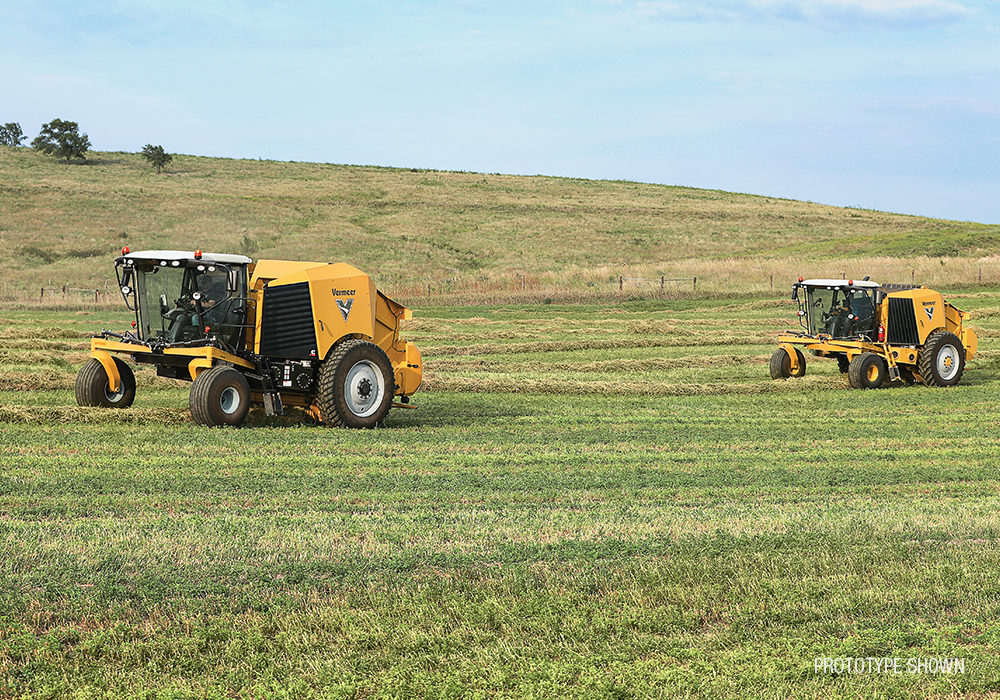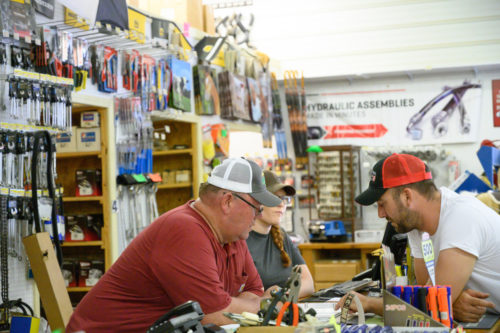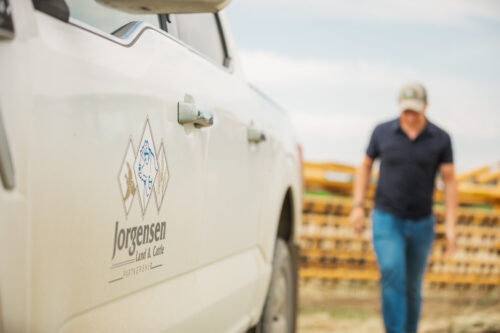The Verdict Is In
May 2019
What producers are saying about the ZR5-1200 self-propelled baler
The Vermeer ZR5-1200 self-propelled baler opened a lot of eyes in the hay and forage business when it was launched in 2018. Late last year, select custom hay producers had the chance to run the new machine and get a feel for how the disruptive new baler can change how they operate in the field.
The early verdict
The machine is good. Really good. “If I could go back in time to when I was custom baling, having a self-propelled baler would have been the way to go for me,” said Eric Woodford, owner of Woodford Equipment in Emmetsburg, Iowa.
“I can imagine I would have saved a lot of time and hired a lot less extra help on the farm if I’d had one of these.”
Custom baling is often a game of hurry up and wait, then operate as quickly and efficiently as possible when the time is right. Custom hay producers around the country face challenges in maintaining the highest level of service to all their customers, especially when weather conditions shorten optimal time frames for cutting and baling hay. Time is often a major contributor to the success — or lack of it — of a custom hay producer.
Preserving a precious commodity
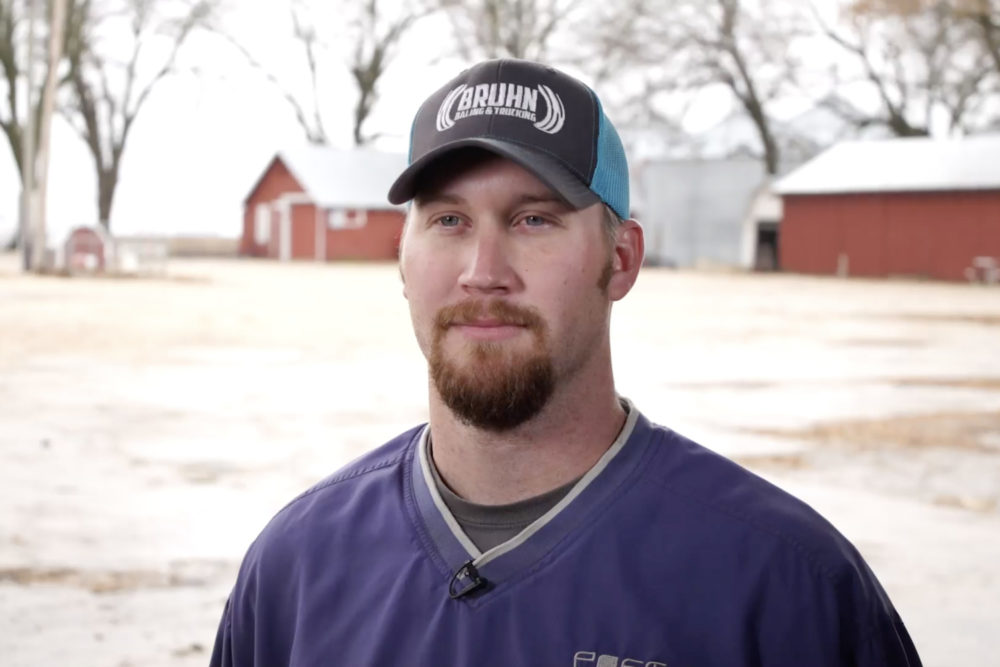
When hay producers ran the ZR5-1200 in the last year, they quickly noticed the benefits of the machine that helped them
operate more efficiently and make better use of the most precious commodity during a busy haymaking season: time.
“We were normally getting about three acres done every 15 minutes with my traditional baler system, and we got four acres covered with the ZR5-1200,” said custom hay producer Eric Bruhn, Cylinder, Iowa. “If we can cover an extra acre every 15 minutes, that makes a major difference. I was really impressed.”
Chris Walker broke a record for his Mason City, Nebraska-based custom hay operation when he put the ZR5-1200 to work. The self-propelled baler, combined with its convenient-to-use controls and maneuverability in the field, helped him produce 560 raked cornstalk bales in an eight-hour period.
“We put up a large quantity of cornstalk bales. With the ZR5-1200, we can bale faster, but we can also make changes that help us get even more efficient. We can operate with larger windrows because the front end is bigger,” Walker said. “Pulling our baler with the tractor, we can only operate with a windrow small enough to fit under the tractor’s drawbar. On this machine, you can push hay through it in a larger windrow much more quickly.”
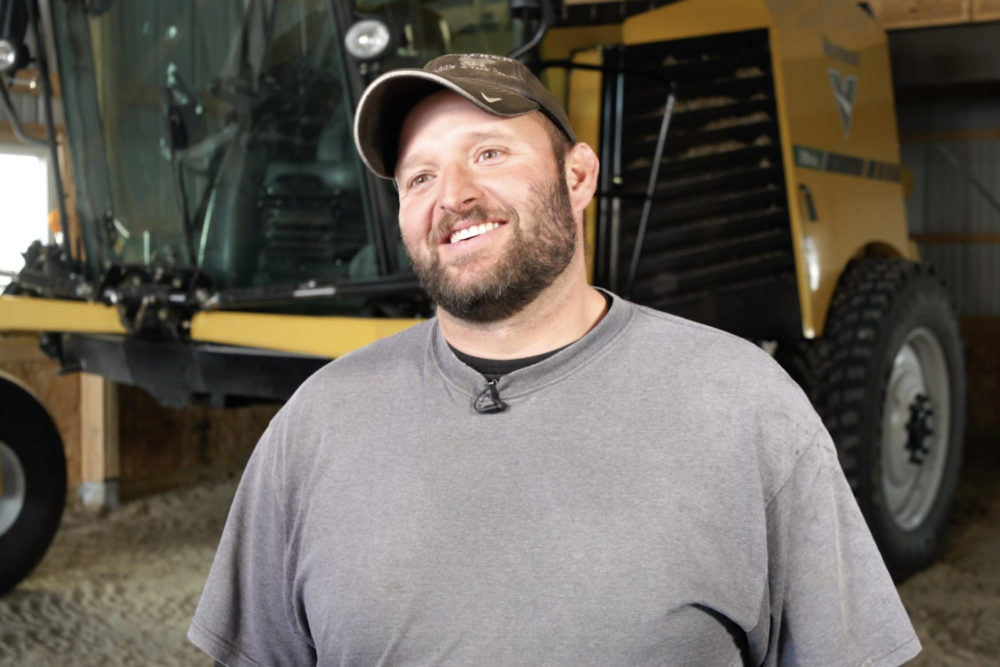
Though he typically operates two Vermeer 605N balers, custom hay operator Loren Weier of Linn Grove, Iowa, said while the ZR5-1200 doesn’t quite do the work of those two machines in the same amount of time in the field, there’s a strong case for ultimately leveraging the self-propelled baler for his customers.
“I would say I’ll be better off buying a ZR5-1200 than two tractors and two balers in the long run,” Weier said. “I ran one up against two 605N balers and they produced 150 bales in the same amount of time it took the ZR5-1200 to do 130 bales.”
Maneuvering through more hay acres
The zero-turn radius of the ZR5-1200 has proven invaluable to operators in the field, but the handling benefits go well beyond the ability to turn on a dime. In 2018, Bruhn faced some difficult field conditions that would have kept a conventional baler from reaching some windrows. The ZR5-1200 was able to reach those trouble spots.
“A lot of our fields had drown-outs and tile-line ditches, and I was able to bale right up to those tile lines and wet holes with no trouble. That feeder house was rarely empty,” Bruhn said. “In areas where my tractor/baler system would have gone only about five miles per hour, the ZR5-1200 was able to bale at 10 or 11 miles per hour (16 or 17.7 kph). That was a huge advantage and definitely a major time-saver. You can’t really appreciate it until you operate it.”
Bumping up transit time
In addition to features that help make operations in the field faster and more efficient for the operator — like a tighter
turning radius and ability to handle larger windrows — hay producers who have operated the machine have found timesavings in the overall speed of the ZR5-1200, especially when traveling between fields. Travel time has long been an issue for Woodford’s customers.
“Through the years, we’ve gotten customers who have bought a new baler from us and they’ve said ‘My tractor only goes 18 miles per hour (28.9 kph) down the road, and I can’t get much done when I’m driving across the country all day.'” he said. “Now with the ZR5-1200, they can go up to 30 miles per hour (48.3 kph) down the road. I think it’s a major milestone.”
For Weier, that time savings translates directly to productivity. “I’ve got jobs that are 15 miles (24.1 km) from home. The ability to go so much faster on the road than with a conventional baler enables me to get jobs done so much faster,” he said.
Helping save the operator
For much of today’s modern farm machinery, in-cab technology has made operator comfort something of a foregone conclusion. New machines are simply more comfortable than their predecessors. But baling hay is still one of the more fatiguing jobs done from behind the wheel. With its innovative new design and features, operators say the ZR5-1200 provides a level of comfort they’ve not before experienced when baling hay.
“When you’re cranking out a large quantity of bales and you’ve got to turn around all the time, it can take a toll on you. With this machine having two cameras on it, one on the top and one underneath, you can switch back and forth to see the bales behind you,” Walker said.
The first five production models of the ZR5-1200 self-propelled baler were manufactured in fall. Vermeer is moving toward full production this year that will be headed to customers and select dealers in the Midwest, West and Canadian regions. Interested in a ZR5-1200 for your operation? Start here: Vermeer.com/ZR5
